Virginia peregrine falcons leap forward
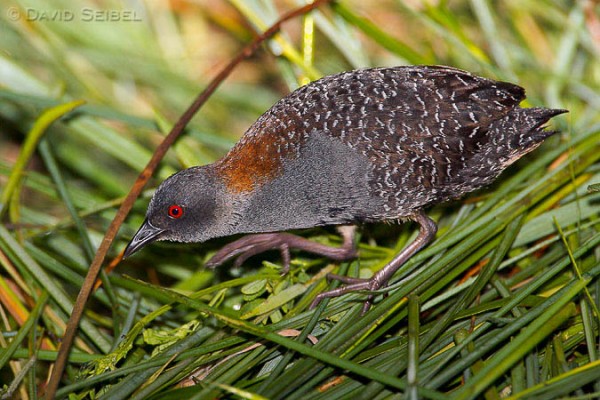
Eastern black rails in free fall
January 4, 2017Breeding birds of Virginia
January 6, 2017
Virginia supported 31 pairs of peregrine falcons during the 2016 breeding season (download 2016 report). With a historic pre-DDT population estimated to be 25 breeding pairs, the 2016 population is the largest ever recorded in the state and represents the fourth consecutive year exceeding the historic mark. As with all years since reintroduction efforts began in the late 1970s, birds were concentrated on the coast including 28 pairs on the Coastal Plain, 1 pair in the Piedmont, and 2 pairs in the mountains. The dramatic success story is dampened only by the lack of recovery in the mountains. Virtually the entire historic population nested on open cliff faces in the mountains. The two pairs currently known from this region represent a recovery of less than 10%.
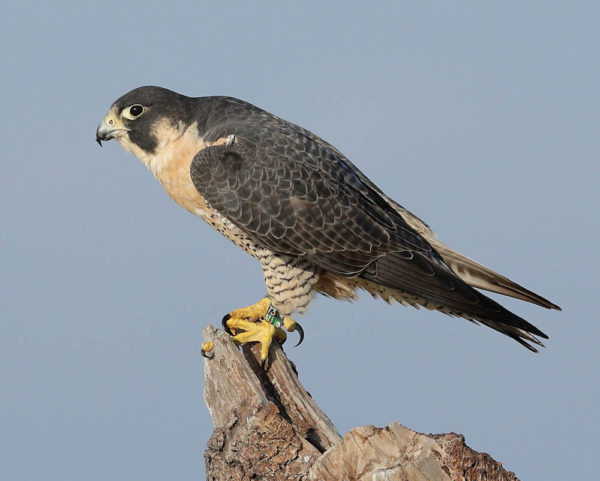
Peregrine falcon resighted on Chincoteague National Wildlife Refuge. This bird was banded as a nestling on Watts Island in 2015. Photo by John NcNamara.
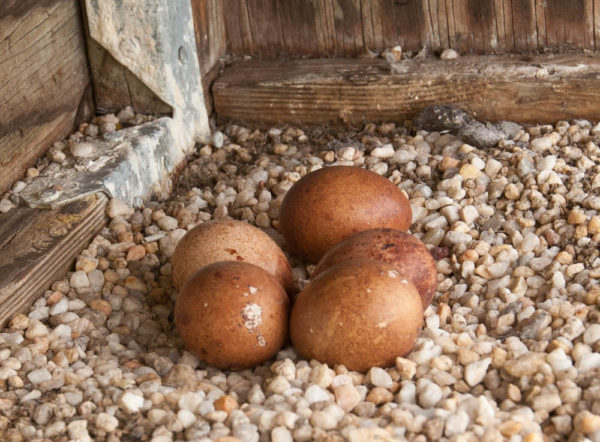
Five-egg clutch laid on the stack of the Possum Point Power Station. Photo by Bryan Watts.
Despite the record number of pairs, 2016 was a difficult breeding season for peregrines and many other species. The relentless rains during the heart of the breeding season appeared to have an impact on productivity. Only 49 of 85 (57%) eggs hatched and several pairs made very late breeding attempts. Productivity (1.58 young/pair) was considerably lower than observed in recent years.
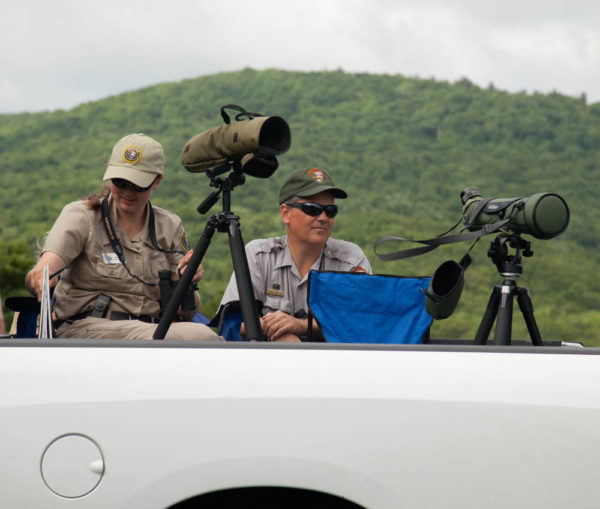
Hannah Andrascik and Rolf Gubler watching recently released peregrines around Franklin Cliffs in Shenandoah National Park. Photo by Bryan Watts.
Efforts continued in 2016 to identify breeding adults using field-readable bands to better understand dispersal and demography throughout the mid-Atlantic region. The banding status of 45 of the 63 (71%) adult peregrines known within the breeding population was determined. Twelve (26%) of the 45 birds were unbanded. Among the banded birds where state of origin could be determined, 20 were from Virginia, 6 were from New Jersey, and 2 were from Maryland. Birds ranged in age from 1 to 16 years. In addition to adults breeding in Virginia, bands for 12 additional falcons were read and reported over the past year. Six of these birds originated in Virginia and were found breeding in other states including a male and female in Pennsylvania and four females in New Jersey.
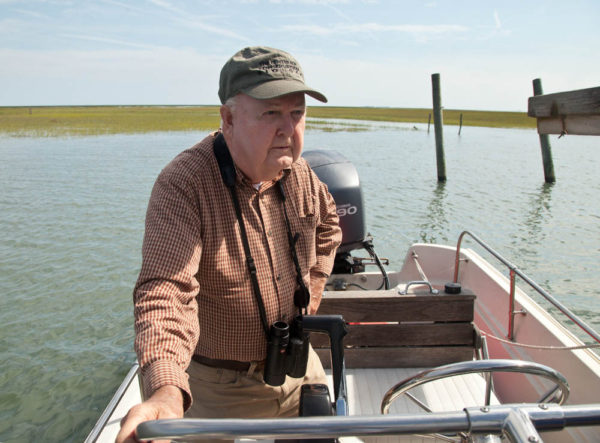
Mitchell Byrd around the Godwin Island nest box on the seaside of the Eastern Shore. Photo by Bryan Watts.
The Virginia population continues to benefit from a tremendous community of dedicated agencies, corporations, and individuals including the Virginia Department of Game & Inland Fisheries, the Virginia Department of Transportation, the U.S. Fish and Wildlife Service, the National Park Service, the U.S. Forest Service, the U.S. Coast Guard, the U.S. Department of Defense, Dominion, and The Nature Conservancy.
Written by Bryan Watts | bdwatt@wm.edu | (757) 221-2247
January 5, 2017
PHOTO GALLERY:
[easy_image_gallery]



